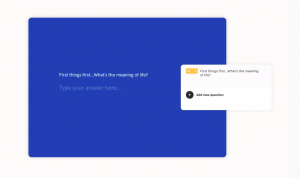WHY SHOULD I WRITE A PROPOSAL?
- Client could fail to provide timely access to content, you have no proof of this not being your fault if you don’t have a proposal
- Funding that was once available for the project may be shifted to something else
- Allows you to define terms that protect both sides in the event that something unexpected comes up
- If a client looses funding – without a proposal you could end up not being paid for work you already completed
WHAT ARE THE CORE ELEMENTS OF A GOOD PROPOSAL?
- title page
- revision history
- project overview
- project approach
- additional costs and fees
- project pricing
- scope of work
- assumptions
- deliverables
- ownership and rights
- payment schedule
- acknowledgement and sign off
HOW TO GUIDE FOR WRITING A PROPOSAL:

I decided to read a little more on how specifically UX proposals are created. I found this guide by Steven Douglas to be useful.
Douglas acknowledges that writing a proposal as a young designer can seem daunting at first, however when its taken step by step its not so bad. Once the proposal is out of the way however, it allows for the designer and the client to “be on the same page, understanding the same problems.”
The proposal acts as a reference for everybody involved within the project, so that less questions need to be asked, and so there is proof of agreed information rather than just hearsay. Another way to think of a proposal in words I’ve heard previously before is a “design brief”.
Douglas says some of the benefits of a UX proposal include:
- Better products
- Streamlined workflow
- Less risk
- Insight discovery
When to write your proposal:
Douglas explains that it’s not a good idea to drive straight into writing one, and that you should chat with your client a bit beforehand. If you want to start the conversation with stakeholders on good footing, he suggests trying creating a Typeform so that onboarding is more successful. A Typeform is particularly useful if I’m are unable to meet with the client in person as it allows questions to be asked clearly and succinctly so you’re both on the same page.

According to Susan Farrell at Nielsen Norman Group, collaborating early with stakeholders like this can prevent design problems from cropping up in the future, and will “increase visibility for UX design”.
I must make sure that I outline the problem in a clear and concise way, offer the solution and, explain how the solutions are a benefit to them and the overall business goals. This is because people respond to benefits, not features.
Other tips:
Ghantt charts
Consider using a Gantt chart for areas in the proposal where project time management must be recorded. Gantt charts help illustrate the timeline of a project, can keep you on top of deadlines and are useful for highlighting milestones. They are simple, easy to read charts which break down the structure of projects and are a visual aid to project planning and scheduling.
Defining Deliverables
Defining deliverables will depend on the project at hand, but some deliverables might include:
- Carrying out competitor analysis
- Creating personas
- User flows
- Capturing UX requirements
- Ideation
- Wireframing
- Creating an interactive prototype
- User testing